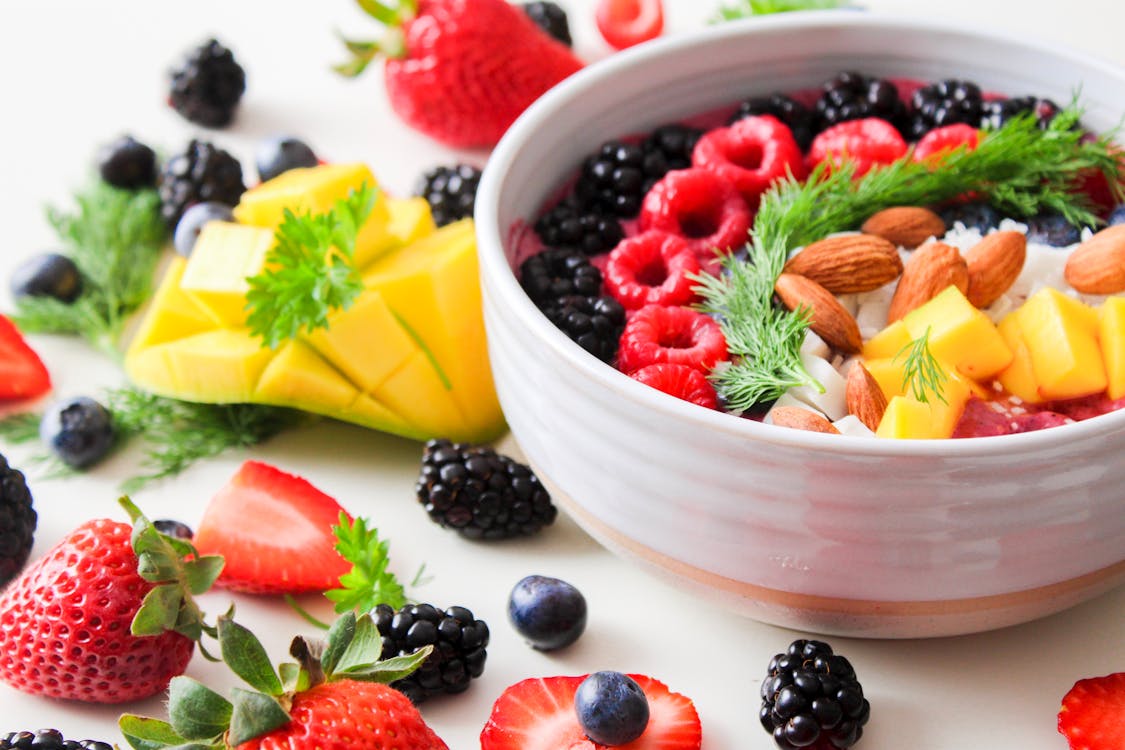Fruits are an essential part of a child’s diet due to their
high content of vitamins, minerals, fiber, and antioxidants. Here are several
fruits that are particularly beneficial for children, along with detailed
explanations of their nutritional benefits and ways to incorporate them into a
child’s diet.
1. Apples
Nutritional Benefits:
- Fiber: Apples are rich in dietary fiber, particularly in
their skins, which aids digestion and helps prevent constipation.
- Vitamin C: Essential for a healthy immune system and skin.
- Antioxidants: Protect the body’s cells from damage by free
radicals.
Ways to Incorporate:
- Sliced as a snack.
- Added to salads.
- Made into applesauce.
- Baked or stewed as a dessert.
2. Bananas
Nutritional Benefits:
- Potassium: Crucial for heart health and proper muscle
function.
- Vitamin B6: Important for brain development and function.
- Fiber: Helps maintain regular bowel movements.
Ways to Incorporate:
- As a quick, portable snack.
- Mashed and added to yogurt or oatmeal.
- Blended into smoothies.
- Frozen as a healthy ice cream alternative.
3. Berries (Strawberries, Blueberries, Raspberries)
Nutritional Benefits:
- Antioxidants: High in antioxidants, particularly vitamin C
and anthocyanins, which support brain health and reduce inflammation.
- Fiber: Aids digestion and promotes a feeling of fullness.
- Low in Calories: Helps maintain a healthy weight.
Ways to Incorporate:
- Mixed into cereal or yogurt.
- As a topping for pancakes or waffles.
- Blended into smoothies.
- Fresh as a snack.
4. Oranges
Nutritional Benefits:
- Vitamin C: Boosts the immune system and aids in the
absorption of iron from other foods.
- Fiber: Promotes digestive health.
- Folate: Essential for cell division and growth.
Ways to Incorporate:
- Freshly peeled and segmented.
- As freshly squeezed juice.
- Added to fruit salads.
- As a zest or juice in various recipes.
5. Grapes
Nutritional Benefits:
- Antioxidants: Particularly resveratrol, which supports
heart health.
- Vitamin K: Important for blood clotting and bone health.
- Hydration: High water content helps keep children
hydrated.
Ways to Incorporate:
- Fresh off the vine as a snack.
- Frozen for a refreshing treat.
- Added to salads.
- As part of a fruit kabob.
6. Mangoes
Nutritional Benefits:
- Vitamin A: Essential for vision and immune function.
- Vitamin C: Supports the immune system and skin health.
- Fiber: Aids digestion.
Ways to Incorporate:
- Sliced and eaten fresh.
- Added to smoothies.
- In salsas or salads.
- As a puree for younger children.
7. Watermelon
Nutritional Benefits:
- Hydration: High water content keeps children hydrated.
- Vitamin A and C: Support vision, immune function, and skin
health.
- Lycopene: An antioxidant that supports heart health.
Ways to Incorporate:
- Cubed or sliced as a snack.
- Blended into a refreshing drink.
- In fruit salads.
- As a frozen treat.
8. Pineapple
Nutritional Benefits:
- Vitamin C: Boosts the immune system and skin health.
- Manganese: Supports bone development and metabolism.
- Bromelain: An enzyme that aids digestion.
Ways to Incorporate:
- Freshly sliced or cubed.
- Blended into smoothies.
- Grilled as a side dish.
- Added to salads.
9. Pears
Nutritional Benefits:
- Fiber: Particularly pectin, which aids digestion.
- Vitamin C: Supports the immune system.
- Potassium: Essential for heart and muscle function.
Ways to Incorporate:
- Sliced fresh as a snack.
- Added to salads.
- Baked or poached as a dessert.
- As a puree for younger children.
10. Kiwi
Nutritional Benefits:
- Vitamin C: Boosts the immune system and skin health.
- Vitamin K: Important for blood clotting and bone health.
- Fiber: Aids digestion.
Ways to Incorporate:
- Sliced fresh as a snack.
- Added to fruit salads.
- Blended into smoothies.
- As a topping for yogurt.
Incorporating Fruits
into a Child’s Diet
1. Make It Fun: Create colorful fruit salads or fruit kabobs
to make eating fruit more appealing to children.
2. Smoothies: Blend a variety of fruits into smoothies for a
delicious and nutritious drink. Adding yogurt or milk can enhance the nutrient
content.
3. Involve Children: Let children help in selecting and
preparing fruits. This can make them more interested in eating what they helped
create.
4. Variety: Offer a range of fruits to ensure children get a
broad spectrum of nutrients. Rotate fruits to keep meals interesting.
5. Healthy Snacks: Replace sugary snacks with fresh fruits.
Keep washed and pre-cut fruits in the fridge for easy access.
6. Mix with Other Foods: Add fruits to cereals, yogurts, or
even incorporate them into savory dishes for a balanced diet.
Conclusion
Incorporating a variety of fruits into a child’s diet
provides essential nutrients that support growth, development, and overall
health. Fruits like apples, bananas, berries, oranges, grapes, mangoes,
watermelon, pineapple, pears, and kiwi offer a range of vitamins, minerals, and
antioxidants. By making fruits a fun and regular part of meals and snacks,
parents can help ensure their children develop healthy eating habits that can
last a lifetime.

